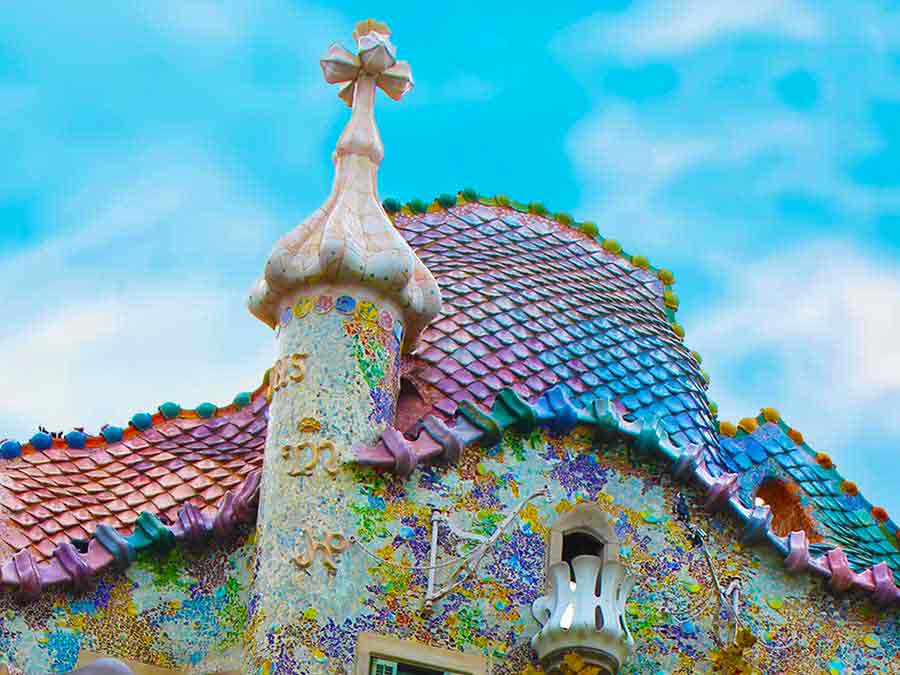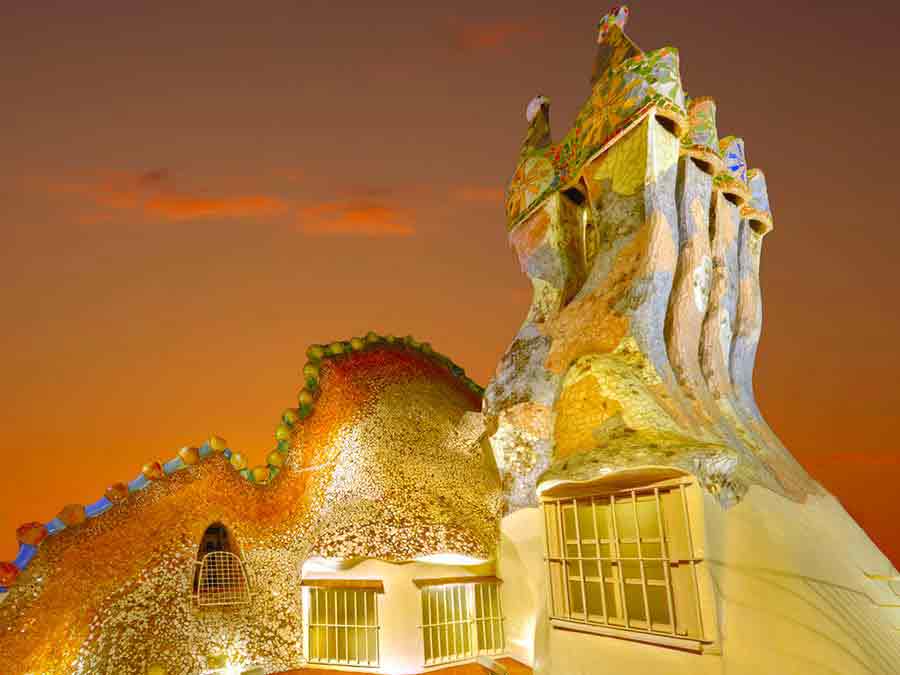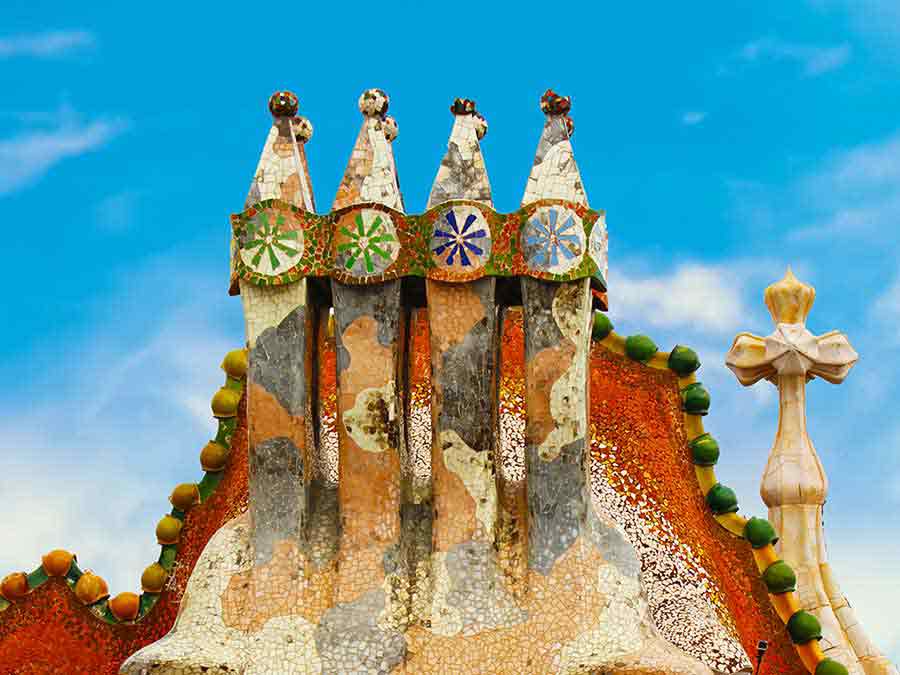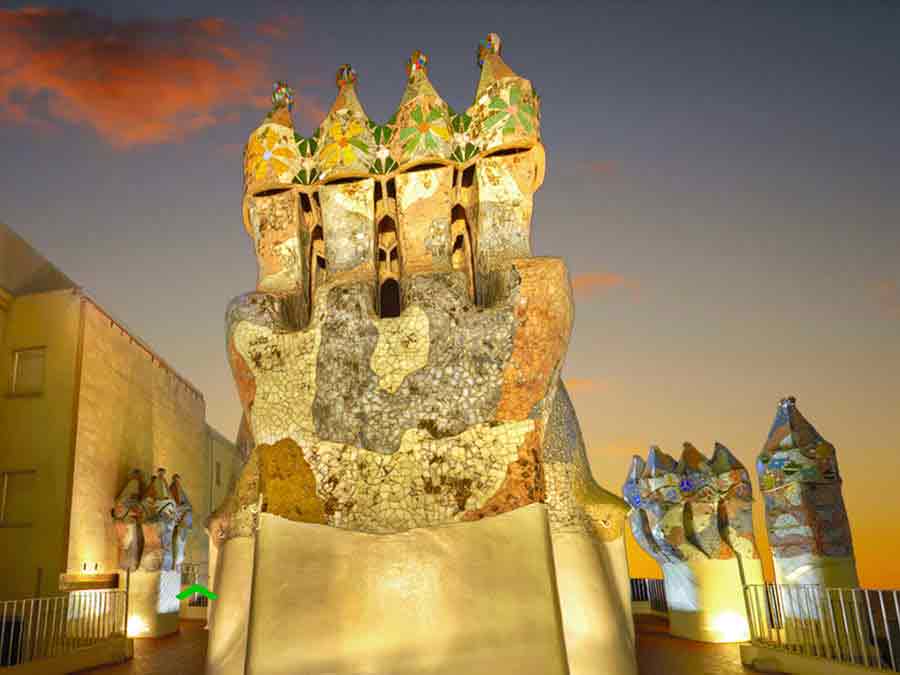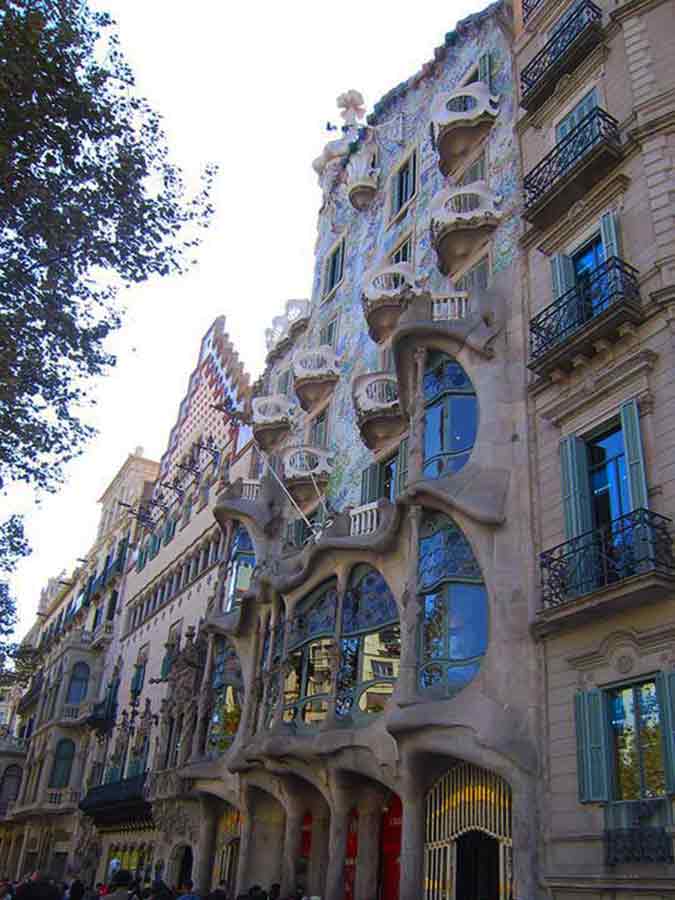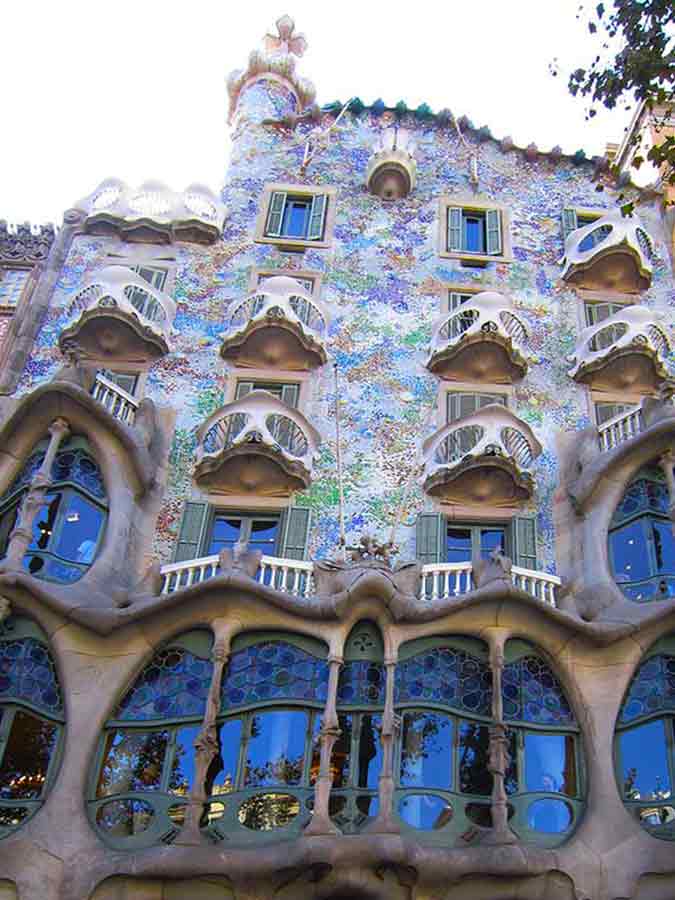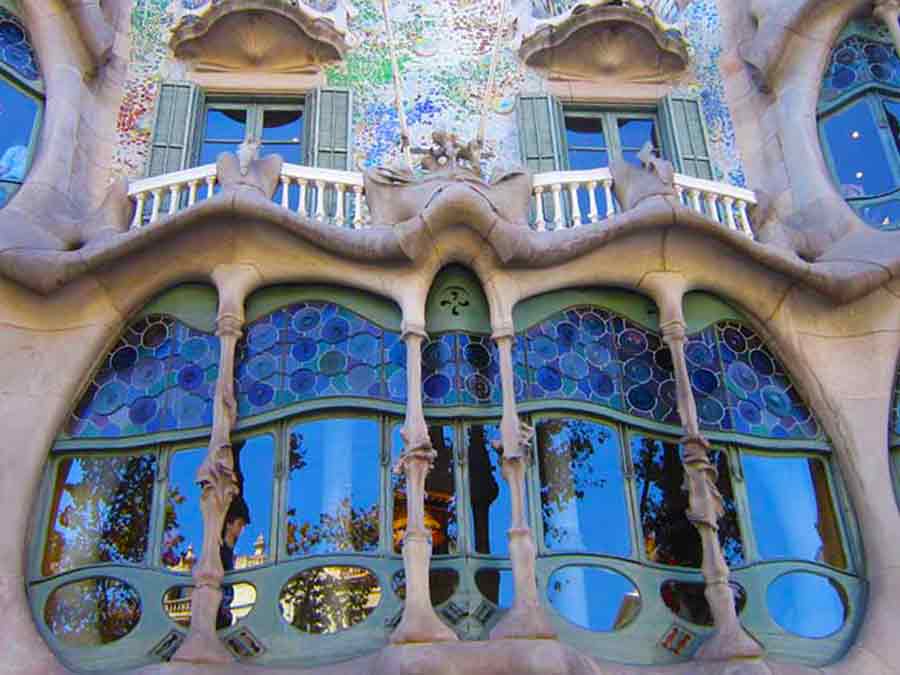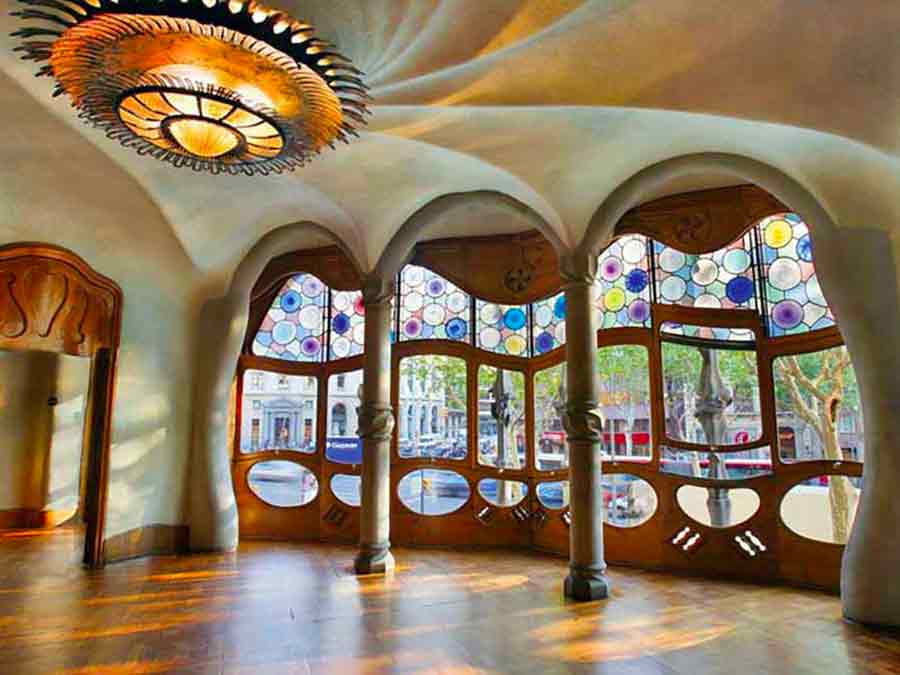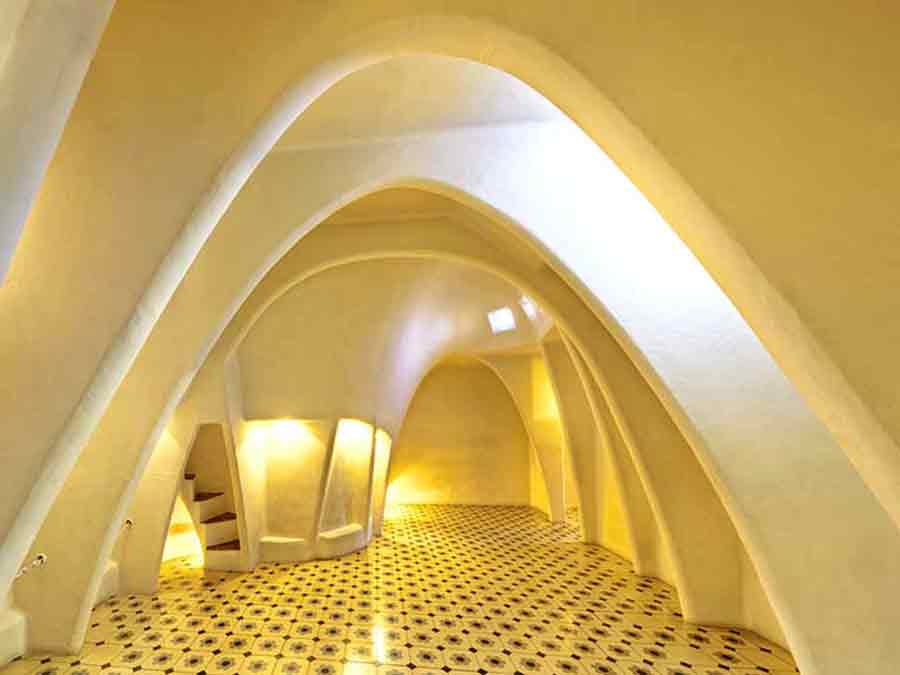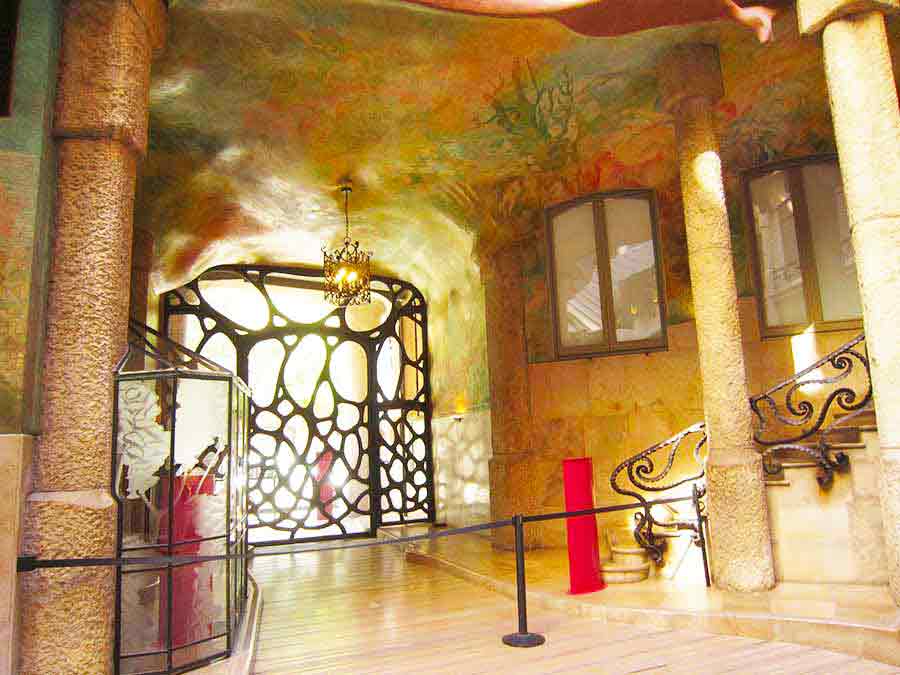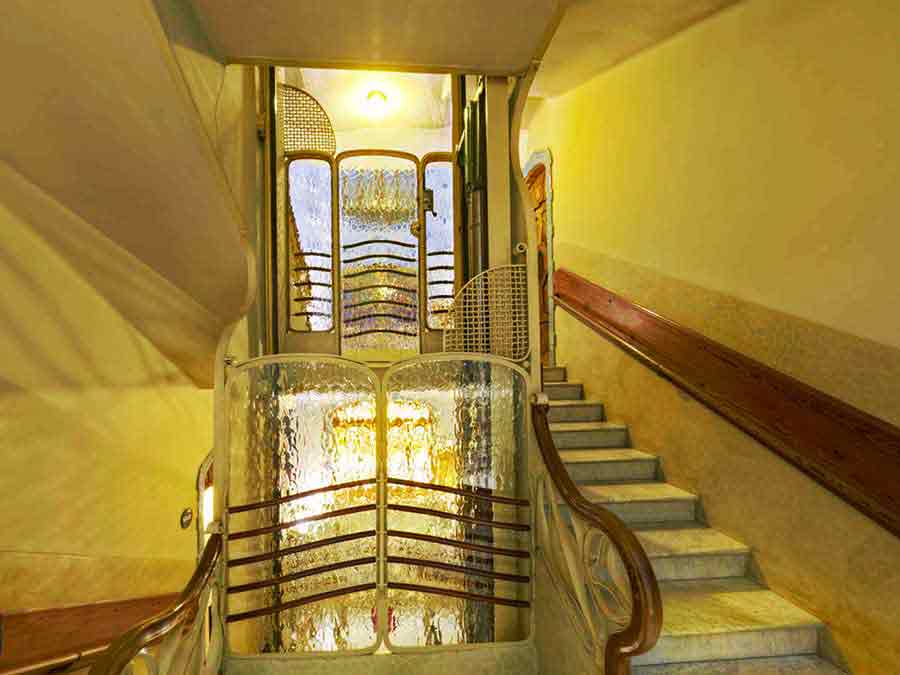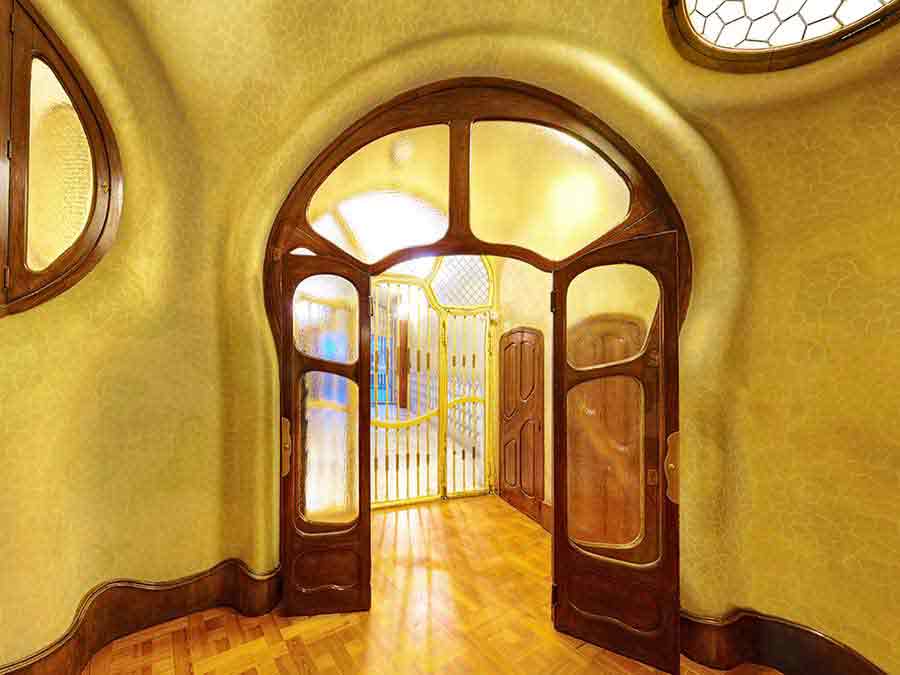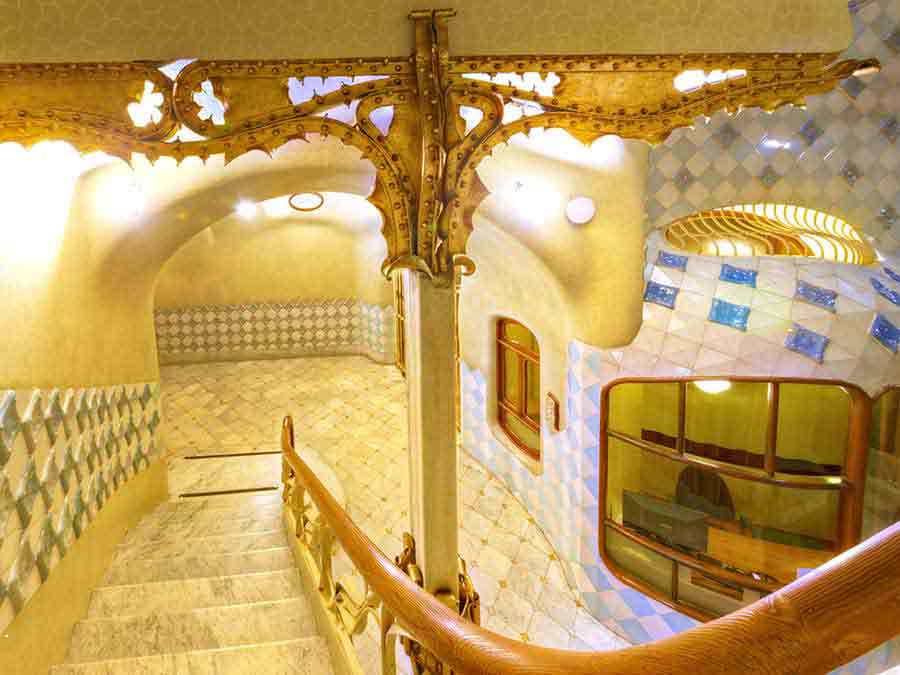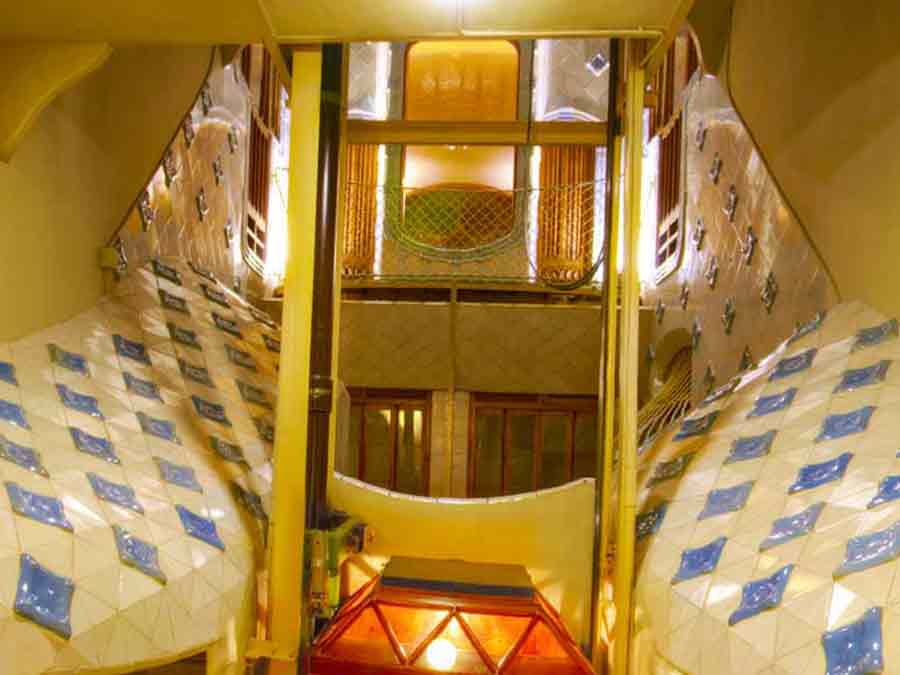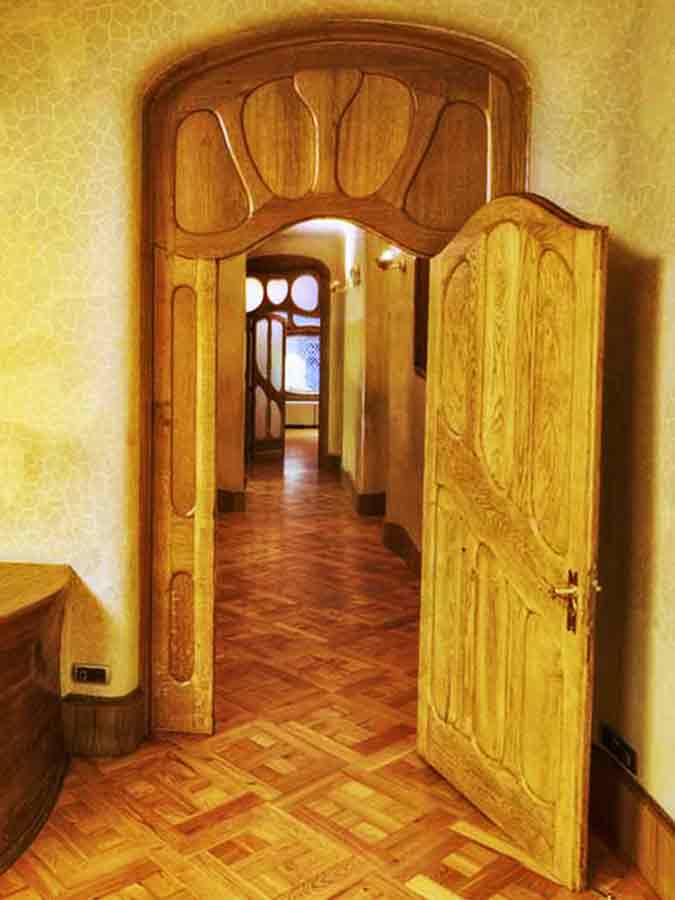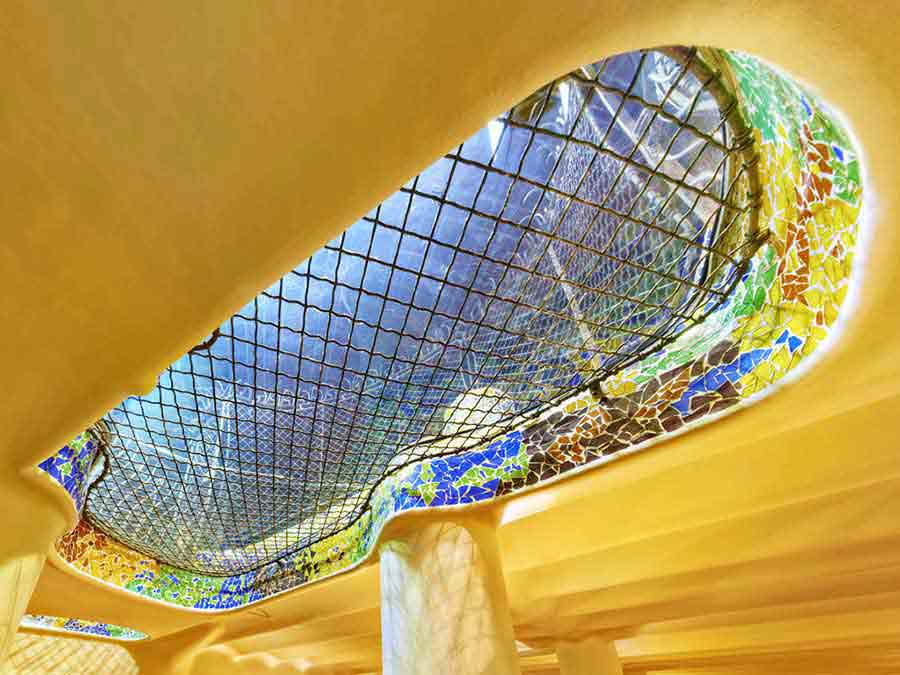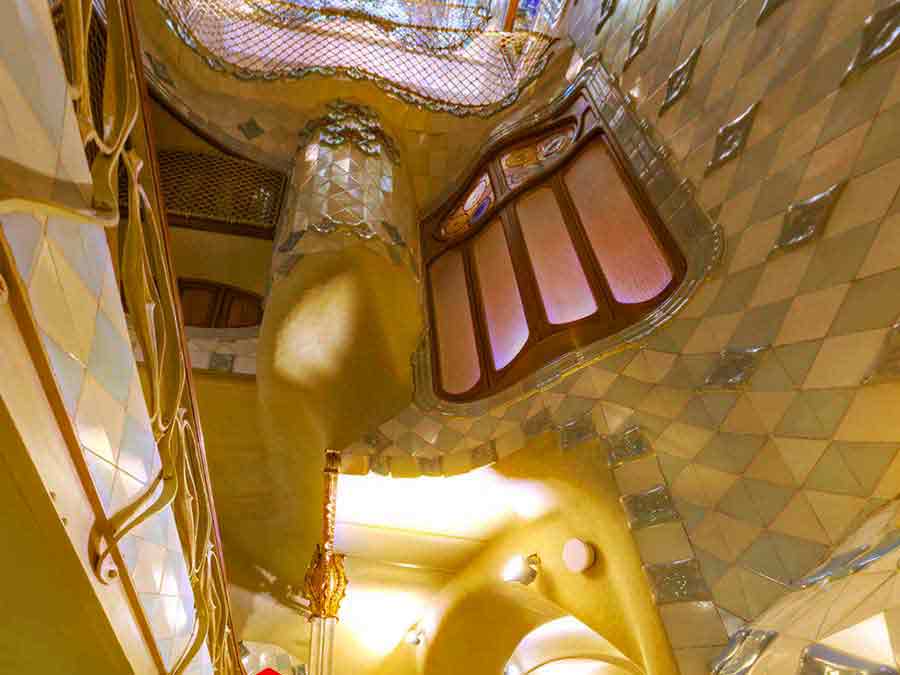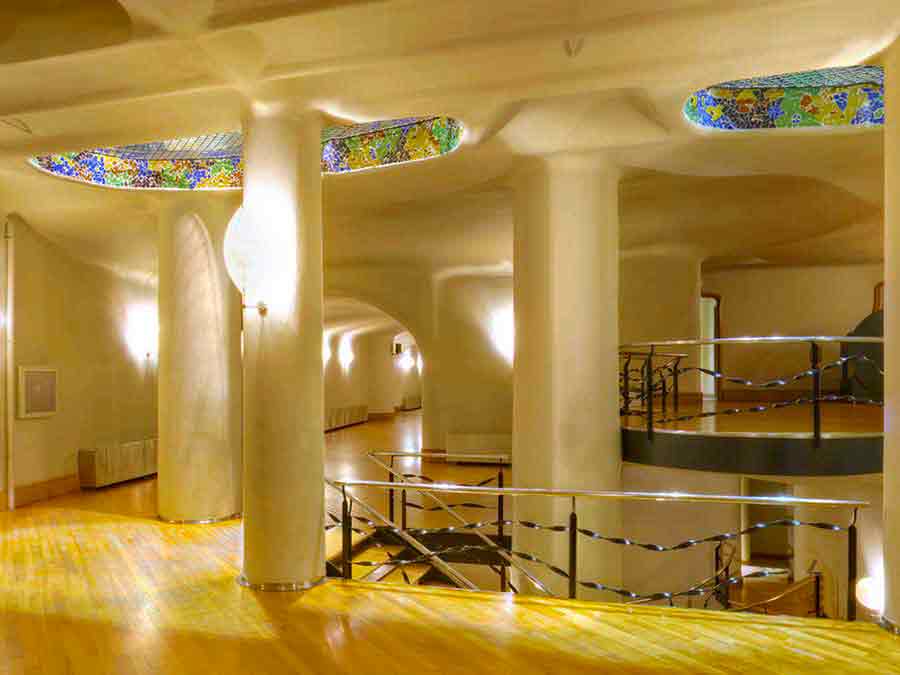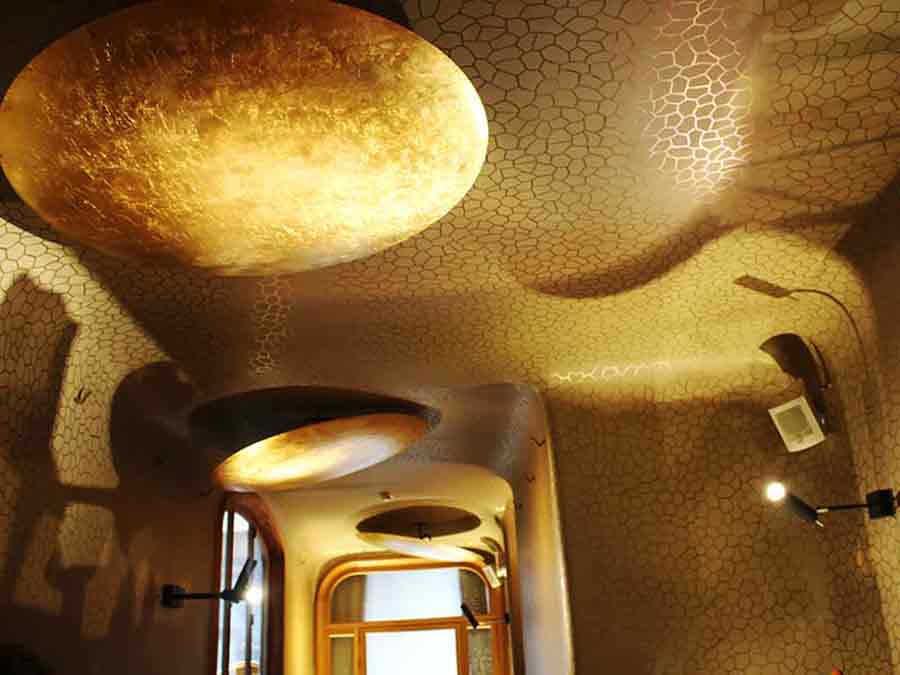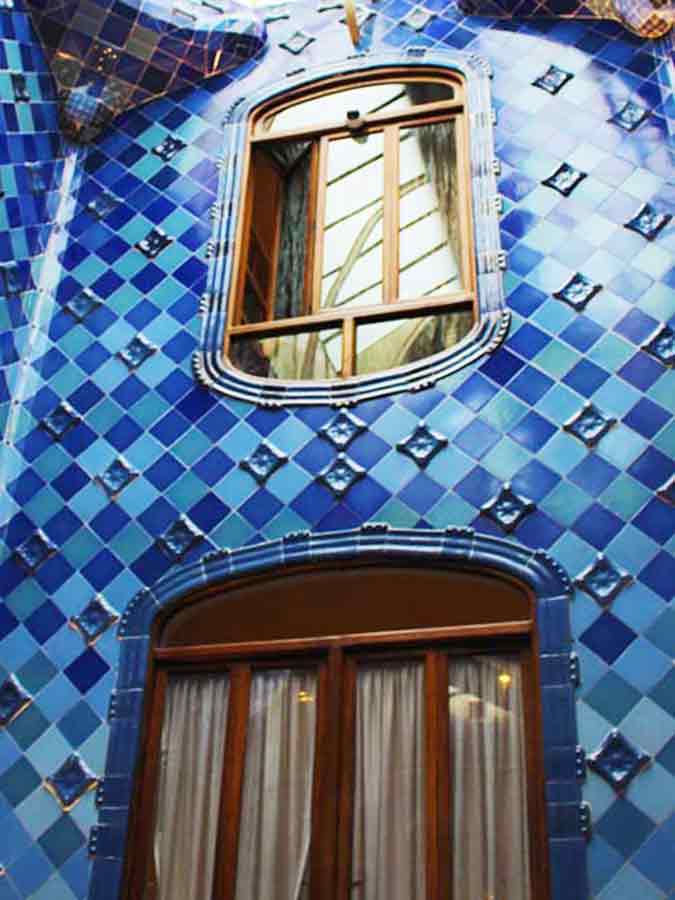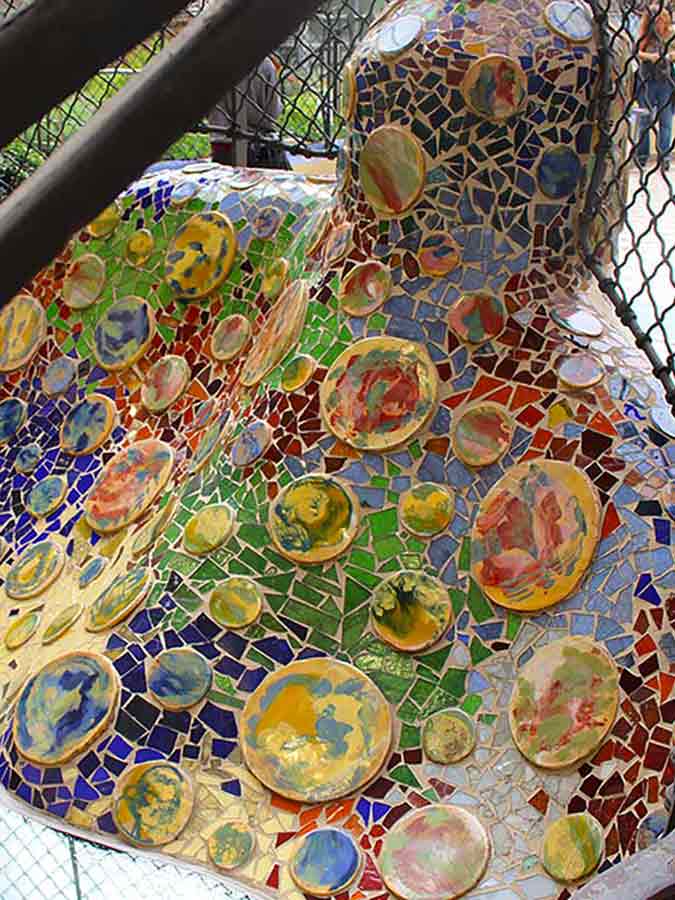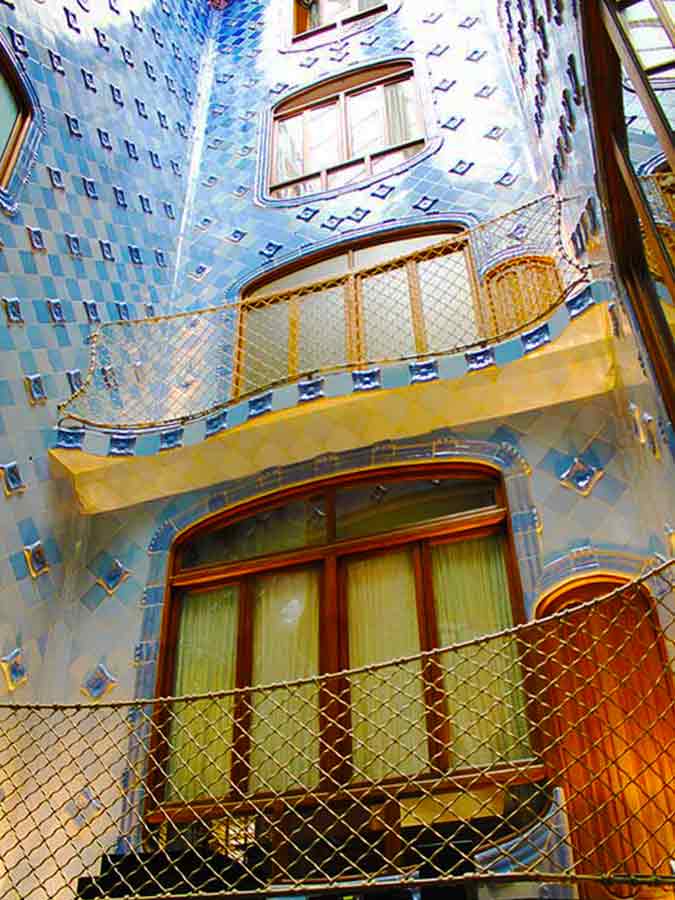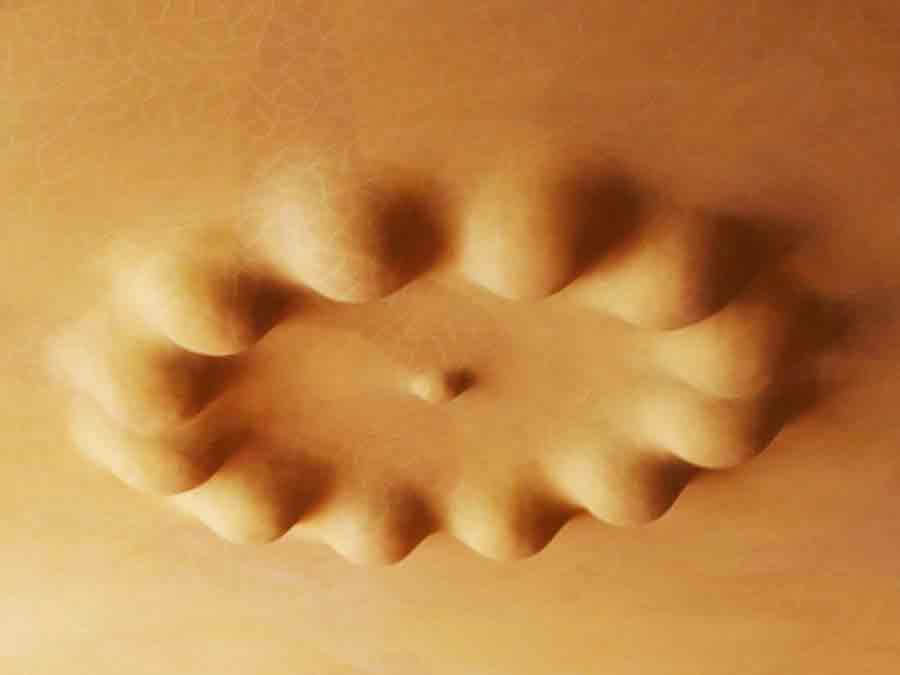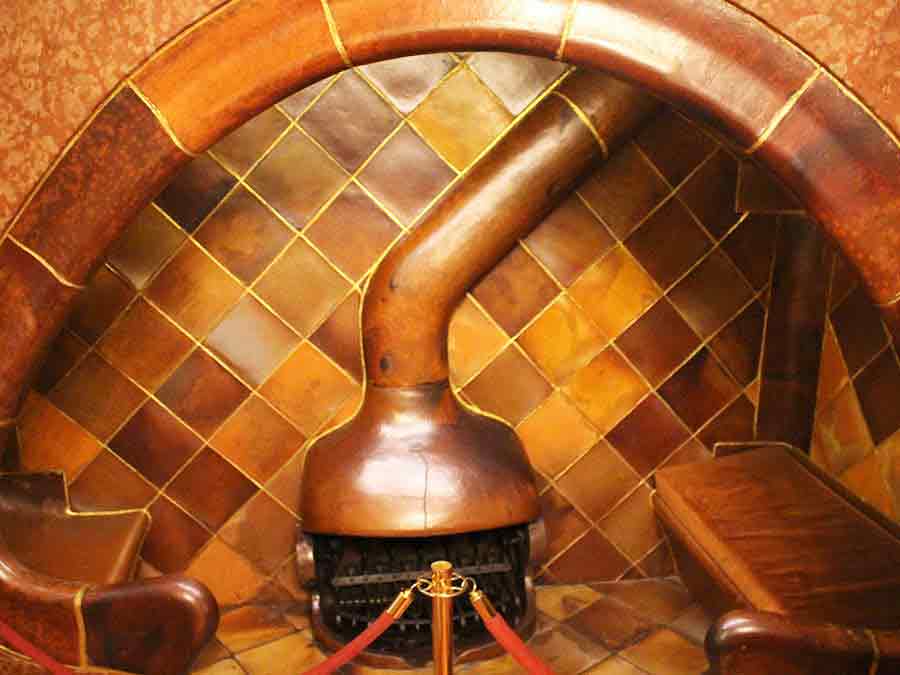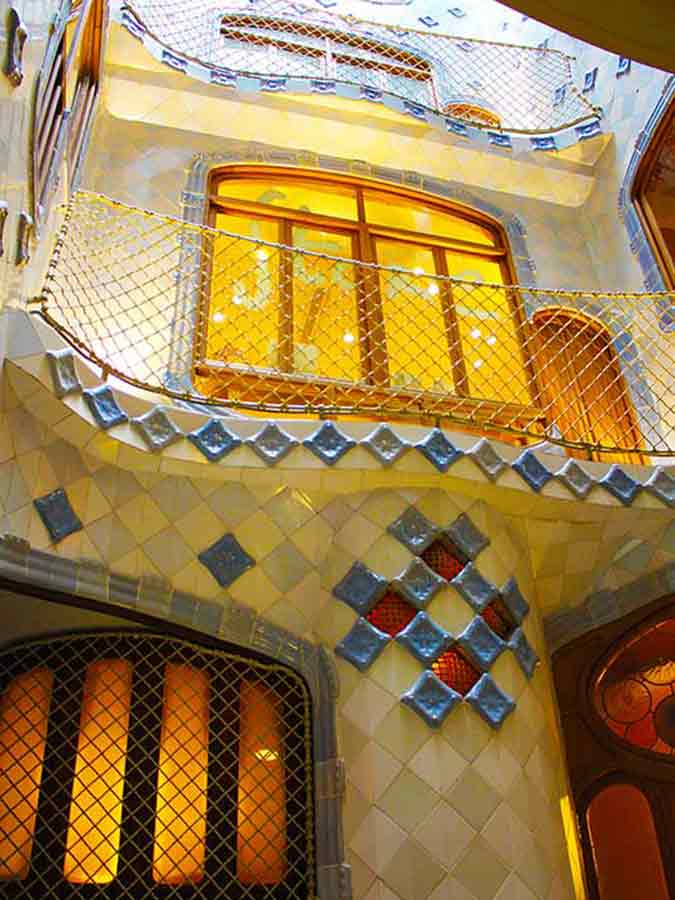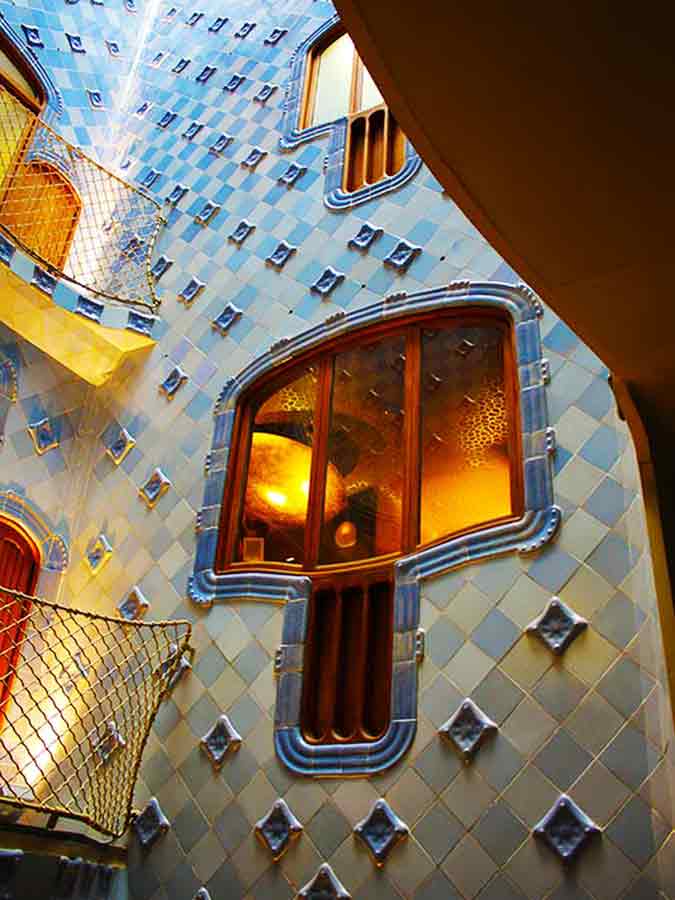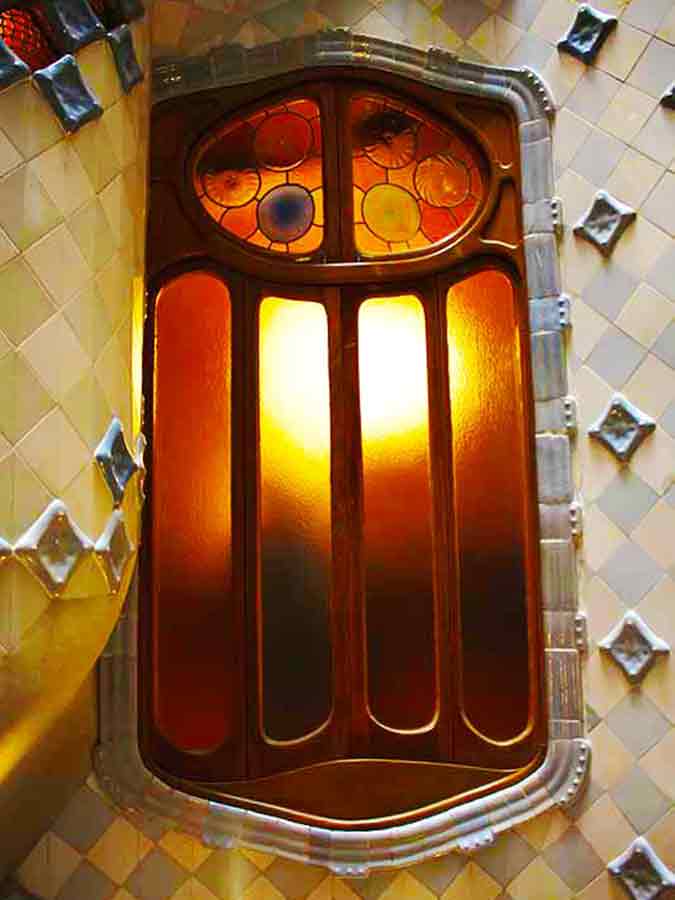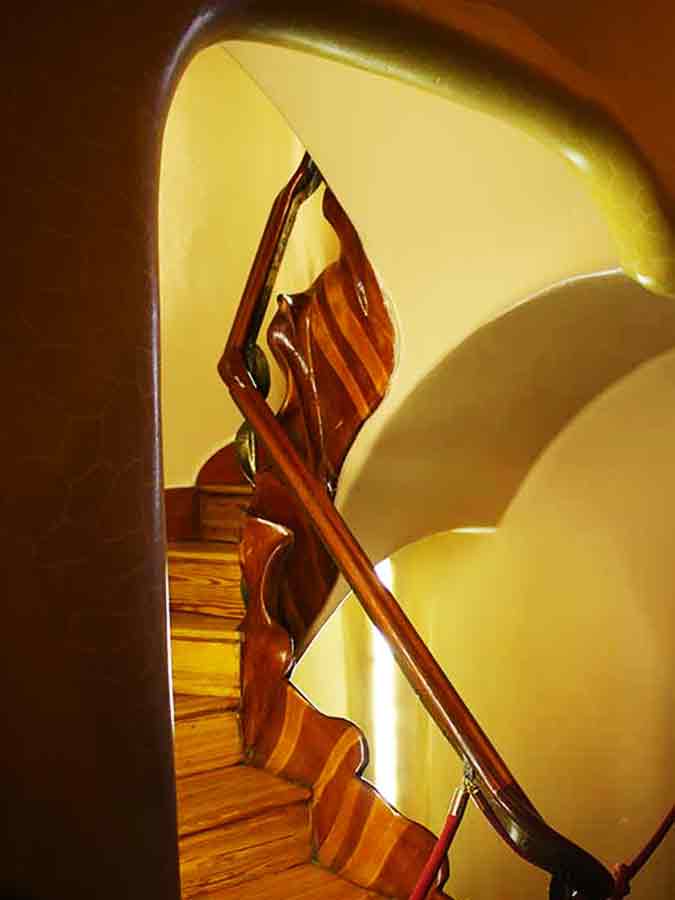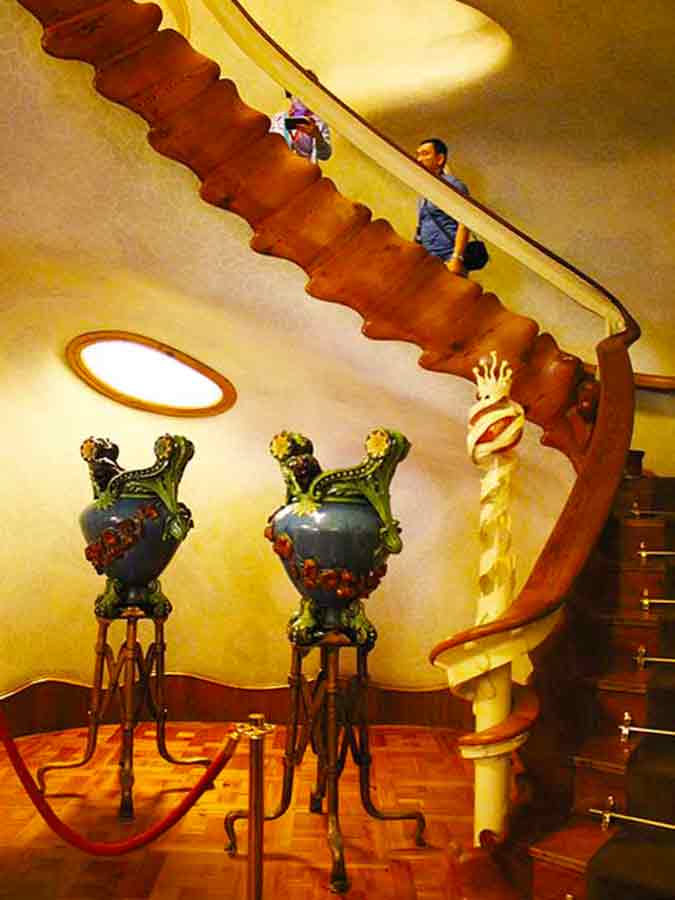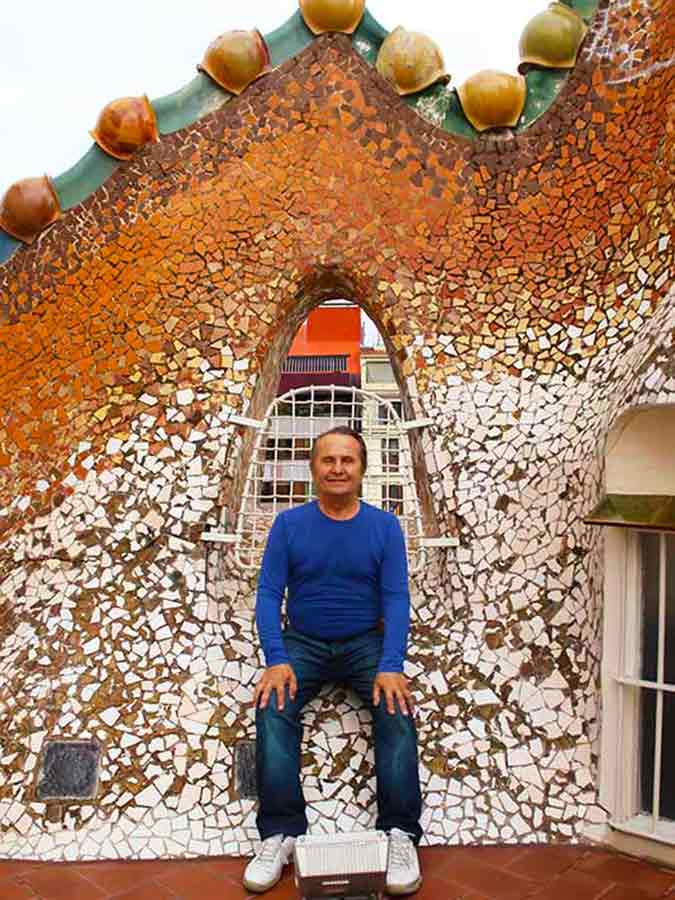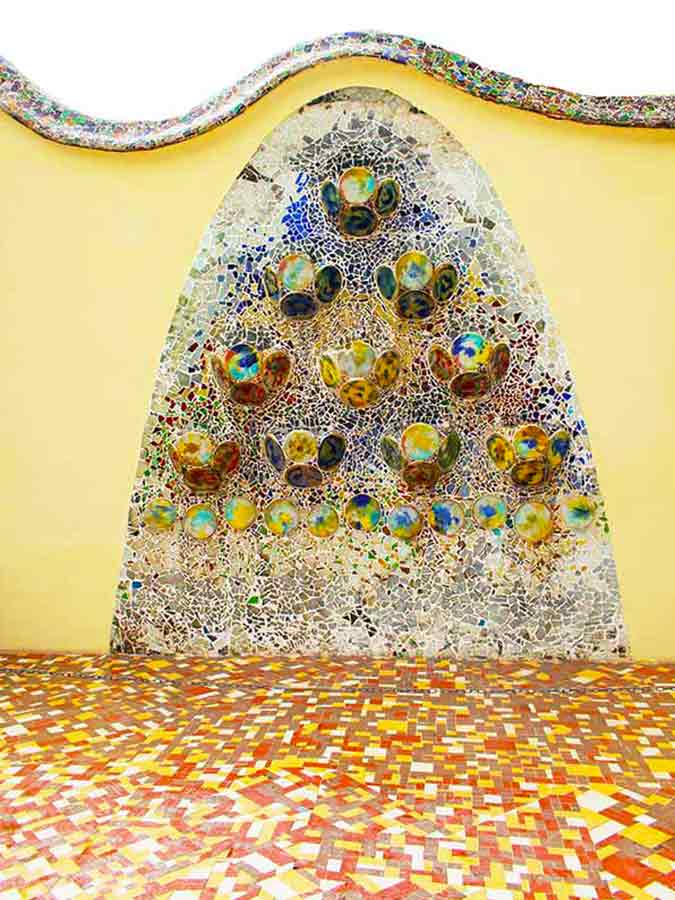Antoni Gaudi, Casa Batlló, Barcelona
Casa Batlló is one of Antoni Gaudí's most iconic buildings, located on Passeig de Gràcia in the heart of Barcelona. Built in the early 1900s, it is a masterpiece of Modernisme, the Catalan version of Art Nouveau. The building was commissioned by textile magnate Josep Batlló, who wanted to renovate an existing house. But Gaudí convinced him to demolish it and create something entirely new. The result is a stunning example of Gaudí's natural grace of imagination and creative power.
Casa Batlló's façade is the most striking feature of the building, with its undulating shape and vivid colors. The lower floors are covered in irregularly shaped pieces of stone, while the upper floors are decorated with an intricate mosaic of broken ceramic tiles. The roof is shaped like the back of a dragon, with its scales made of iridescent ceramic discs.
Inside, the building is just as spectacular. The central light well is covered with a glass dome that filters natural light into the interior spaces. The main staircase is a work of art in itself, with its curved shape and colorful mosaics. The rooms are filled with a variety of organic shapes and textures, from the curved wooden beams to the smooth plaster walls.
Gaudí paid close attention to every detail of the building, designing everything from the furniture to the doorknobs. He even designed the light fixtures to resemble candles, with the electrical wiring hidden inside. Today, Casa Batlló is open to the public for tours, allowing visitors to experience firsthand the beauty and creativity of Gaudí's work. A visit to Casa Batlló is a must-see for anyone interested in architecture and design.
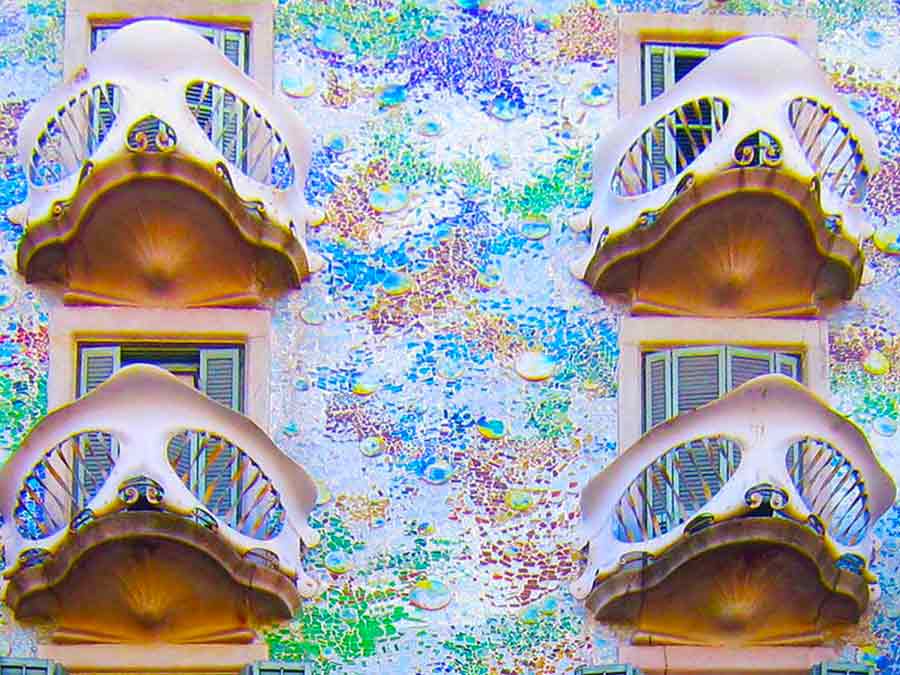
Casa Batlló Facade evokes the surface of a lake with water lilies, with gentle ripples and reflections caused by the glass and ceramic mosaic.
Antoni Gaudi: the history of Casa Batlló
Casa Batlló is a renowned building located in the center of Barcelona and is one of Antoni Gaudí’s masterpieces. The building was built 1875-77 in Barcelona, had a basement, a ground floor, four other floors and a garden in the back. Textile manufacturer Josep Batlló, who was the owner since 1900, initially planned demolition of the house and place at this point a new building in 1904, but eventually decided on a contract to rebuild the building.
The initial task was to bring down the building and build a new one; however, Batlló convinced Gaudi to keep it and make a transformation reforming only the facade. Finally intervention, however, went far beyond as it was a major reorganization of spaces, more natural lighting and ventilation, two-story additions and remodeling the attic and the roof.
Josep wanted an architect that would design a house that was like no other and stood out as being audacious and creative. He chose the architect who had designed Park Güell because he wanted him to come up with a risky plan. Gaudí personally supervised the work carried out. He completely changed the main apartment which became the residence for the Batlló family.
Building was remodeled in the years 1904-06 by Antoni Gaudí and has been refurbished several times after that. Gaudi also designed the interior design details - furniture, lighting, chandeliers, etc. UNESCO added the Casa Batlló to its list of World Heritage sites in 2005.
Casa Batlló is the most distinctive Masterpiece of Modernism
Casa Batlló is a famous building located in the heart of Barcelona and is considered to be one of Antoni Gaudí’s greatest works. Originally built in 1875-77, the building had a basement, a ground floor, four other floors, and a garden in the back. The owner of the building, textile manufacturer Josep Batlló, initially planned to demolish the house and build a new one in its place in 1904. However, he eventually decided to contract Gaudí to transform and renovate the building instead.
Gaudí's intervention went beyond just the facade and included major reorganization of spaces, natural lighting and ventilation, two-story additions, and remodeling of the attic and roof. Gaudí personally supervised the work, and also designed the interior details, such as furniture, lighting, and chandeliers. UNESCO added Casa Batlló to its list of World Heritage sites in 2005.
The building is decorated with a variety of animal motifs, such as bones (in the form of balconies), scales (on the roof), and fish scales (on the walls). Gaudí avoided straight lines completely in his design, and much of the facade is decorated with a colorful mosaic made of broken pottery and ceramic tiles that moves from shades of golden orange to greenish blues.
The interior of the Noble Floor of Casa Batlló is reminiscent of a fantasy world, as if inspired by expeditions or adventure books popular in the late nineteenth century. Gaudí conceived the building as a living organism, where each element is alive and has a dynamic function. His design blurs the boundaries between interior and exterior, with galleries and balconies that interfere with the space.
One of the highlights of the facade is a tower topped with a cross of four arms oriented to the cardinal directions, which evokes plant life. The tower is decorated with monograms of Jesus, Maria, and Joseph, made of ceramic pieces that stand out golden on the green background. The deep religiosity of Gaudí is reflected in this and other elements of the building.
Gaudí's design principles are related to physical determinism and the principle of Werner Heisenberg. He had a taste for the complexity of spaces and volumes and was willing to sacrifice space for organic design. His plaster model of the building's sinuous facade was a practical means of explaining his vision. Overall, Casa Batlló is a testament to Gaudí's natural grace of imagination and creative power.
Casa Batlló relates to a fantasy world
Casa Batlló - Interior of the Noble Floor - relates to a fantasy world, as if it was inspired by expeditions or adventure books so fashionable in the late nineteenth century. Some of the animals or shapes represented inside the main floor seem like drawn illustrations of Alphonse de Neuville in the 1870 edition of the novel Twenty Thousand Leagues Under the Sea by Jules Verne...
Casa Batlló as a living organism
Gaudí conceived the building as nature, as a living organism, where each element is alive and has a function that is dynamic. That is, is both sustained and sustaining part of the work and, above all, is a unit.
The shapes of Gaudi have triumphed in the design world and are related to the physical deterministic, with the principle of Werner Heisenberg.
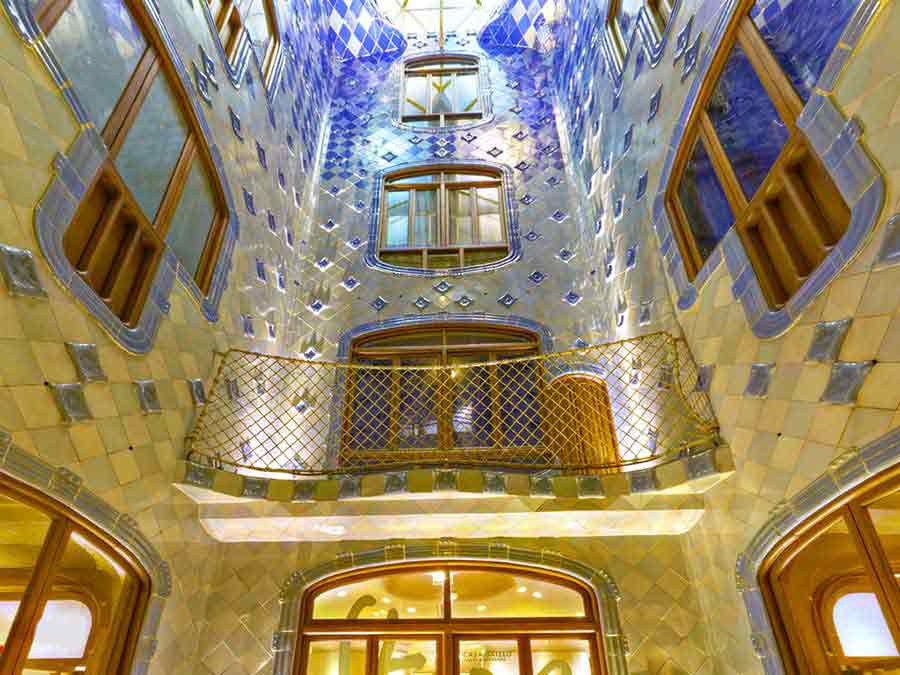
Casa Batlló, Gaudi used large skylights in the base of the rear terrace and patios to illuminate the basement.
Gaudi blurs the line between the inside and the outside
Gaudí never posed no objective rationality of the structure, but, from a constructive predetermined criteria, determined that it is more dramatic vicissitude express the difficulties of construction.
With a taste for the complexity of spaces and volumes and a desire to sacrifice space for organic, becoming an interference space that blurs the boundaries of the building. This trend is particularly marked in the Casa Batllo, where galleries and balconies blur the line between interior and exterior.
Deep Religiosity of Antoni Gaudi
One of the highlights of the facade is a tower topped with a cross of four arms oriented to the cardinal directions. It is a root-like structure that evokes plant life. A second bulb-shaped structure is reminiscent of a thalamus flower, represented by a cross with arms that are actually buds announcing the next flowering.
The tower is decorated with monograms of Jesus (JHS), Maria (M) and Joseph (JHP), made of ceramic pieces that stand out golden on the green background. These symbols show the deep religiosity of Gaudi, who was inspired by the contemporaneous construction of his basilica - to choose the theme of the holy family.
In conclusion, Casa Batlló is an exceptional example of the imaginative and innovative architectural style of Antoni Gaudí. With its curved lines, organic shapes, and unique use of materials, the building stands out as a masterpiece of the Catalan modernist movement. Its stunning facade, richly decorated interior, and rooftop inspired by the legend of Saint George and the dragon make it a must-see attraction for visitors to Barcelona. Casa Batlló continues to fascinate and inspire architects, artists, and visitors from all over the world, as a testament to Gaudí's vision and creativity.
